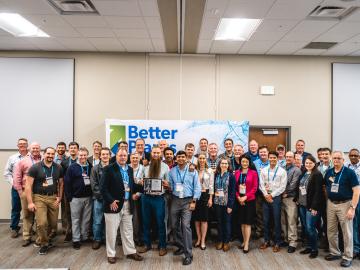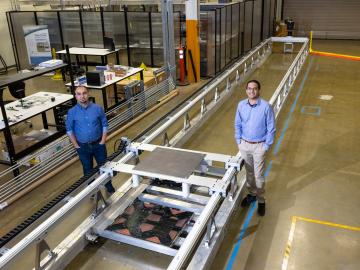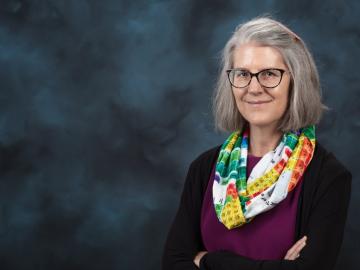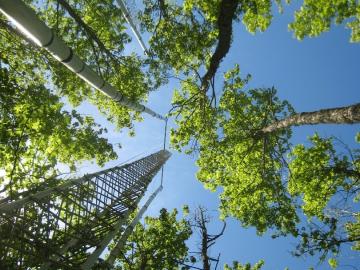
Filter News
Area of Research
- (-) Energy Science (63)
- (-) Materials for Computing (8)
- (-) National Security (20)
- Advanced Manufacturing (2)
- Biology and Environment (75)
- Biology and Soft Matter (1)
- Computer Science (1)
- Electricity and Smart Grid (2)
- Functional Materials for Energy (1)
- Fusion and Fission (7)
- Isotopes (20)
- Materials (52)
- Materials Characterization (1)
- Materials Under Extremes (1)
- Neutron Science (20)
- Nuclear Science and Technology (5)
- Quantum information Science (1)
- Supercomputing (44)
News Type
News Topics
- (-) Big Data (6)
- (-) Cybersecurity (16)
- (-) Environment (29)
- (-) Grid (17)
- (-) Isotopes (1)
- (-) Materials Science (19)
- (-) Mercury (1)
- (-) Polymers (5)
- (-) Space Exploration (2)
- 3-D Printing/Advanced Manufacturing (34)
- Advanced Reactors (5)
- Artificial Intelligence (11)
- Bioenergy (15)
- Biology (9)
- Biomedical (4)
- Biotechnology (2)
- Buildings (15)
- Chemical Sciences (9)
- Clean Water (3)
- Composites (4)
- Computer Science (23)
- Coronavirus (9)
- Critical Materials (1)
- Energy Storage (30)
- Fossil Energy (1)
- Frontier (1)
- Fusion (2)
- High-Performance Computing (7)
- Hydropower (1)
- Machine Learning (10)
- Materials (15)
- Mathematics (1)
- Microelectronics (1)
- Microscopy (5)
- Molten Salt (1)
- Nanotechnology (9)
- National Security (28)
- Neutron Science (10)
- Nuclear Energy (7)
- Partnerships (7)
- Physics (2)
- Quantum Computing (1)
- Quantum Science (3)
- Security (10)
- Simulation (2)
- Summit (3)
- Transportation (23)
Media Contacts

Pengfei Cao, a polymer chemist at ORNL, has been chosen to receive a 2021 Young Investigator Award from the Polymeric Materials: Science and Engineering Division of the American Chemical Society, or ACS PMSE.

Improved data, models and analyses from ORNL scientists and many other researchers in the latest global climate assessment report provide new levels of certainty about what the future holds for the planet

As the United States transitions to clean energy, the country has an ambitious goal: cut carbon dioxide emissions in half by the year 2030, if not before. One of the solutions to help meet this challenge is found at ORNL as part of the Better Plants Program.

ASM International recently elected three researchers from ORNL as 2021 fellows. Selected were Beth Armstrong and Govindarajan Muralidharan, both from ORNL’s Material Sciences and Technology Division, and Andrew Payzant from the Neutron Scattering Division.

Consumer buy-in is key to the future of a decarbonized transportation sector in which electric vehicles largely replace today’s conventionally fueled cars and trucks.

Deborah Frincke, one of the nation’s preeminent computer scientists and cybersecurity experts, serves as associate laboratory director of ORNL’s National Security Science Directorate. Credit: Carlos Jones/ORNL, U.S. Dept. of Energy

When COVID-19 was declared a pandemic in March 2020, Oak Ridge National Laboratory’s Parans Paranthaman suddenly found himself working from home like millions of others.

Oak Ridge National Laboratory was among an international team, led by Lawrence Livermore National Laboratory, who synthesized 108 elevated carbon dioxide, or CO2, experiments performed in various ecosystems to find out how much carbon is

Twenty-seven ORNL researchers Zoomed into 11 middle schools across Tennessee during the annual Engineers Week in February. East Tennessee schools throughout Oak Ridge and Roane, Sevier, Blount and Loudon counties participated, with three West Tennessee schools joining in.

Three technologies developed by ORNL researchers have won National Technology Transfer Awards from the Federal Laboratory Consortium. One of the awards went to a team that adapted melt-blowing capabilities at DOE’s Carbon Fiber Technology Facility to enable the production of filter material for N95 masks in the fight against COVID-19.


